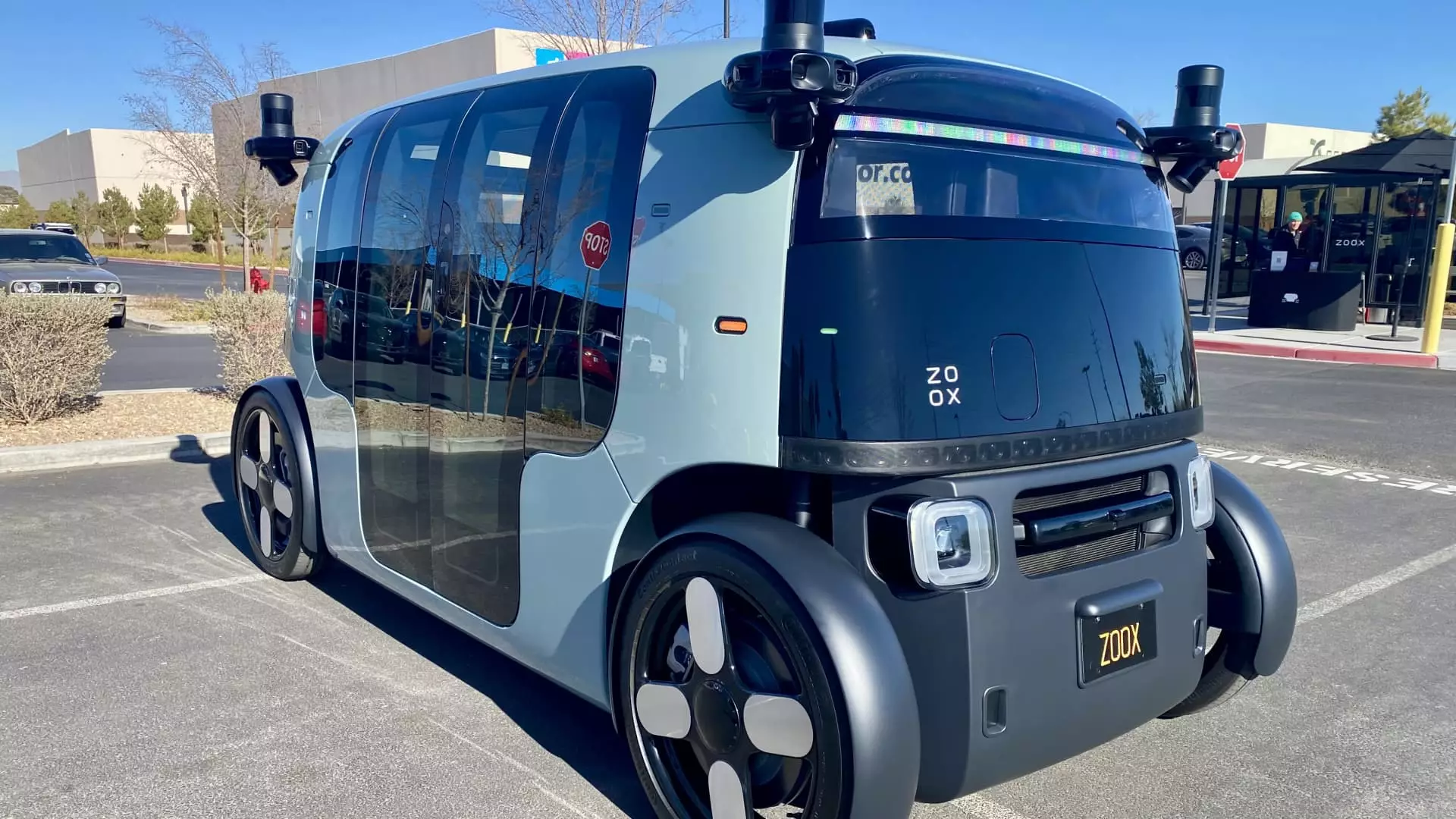In the world of autonomous vehicles, Zoox, a subsidiary of Amazon, stands at the forefront of innovation as it prepares to launch its robotaxi service in Las Vegas later this year. With ambitious plans brewing for expansion into other major U.S. cities like San Francisco and Miami, Zoox’s trajectory appears promising yet fraught with challenges. Co-founder and Chief Technology Officer Jesse Levinson underscores the company’s commitment to offering a unique, driverless transportation experience that is purpose-built for autonomy. As Zoox navigates the complex waters of commercializing robotaxis amidst fluctuating sentiment around self-driving technology, it presents a crucial case study in the evolving landscape of autonomous mobility.
What sets Zoox apart from its competitors—such as Waymo and GM’s Cruise—is its approach to vehicle design. Zoox’s robotaxi is not a retrofitted traditional car but rather a bespoke vehicle shaped uniquely for autonomous travel. It lacks conventional manual controls, embracing a distinctive “box-like” aesthetic. This design decisions evoke mixed reactions; while it aligns with the vision of a seamless automated experience, it raises questions about user acceptance and ergonomics. Experts, like Sam Abuelsamid from Telemetry Insights, acknowledge the potential advantages of the vehicle’s size and form factor. However, it remains to be seen if this unconventional design can capture public interest and drive real engagement.
Despite the optimism surrounding Zoox’s rollout, industry sentiment about autonomous vehicles has grown increasingly skeptical in recent years. The retreat of several legacy automakers from their self-driving divisions illustrates the harsh realities of commercializing this technology. While Zoox is positioning itself for success with an Early Rider Program aimed at introducing the public to its robotaxi service in Las Vegas, it faces formidable industry giants that have already established a foothold in the market. Waymo, for instance, continues to expand its operations successfully, with a track record of supervised and unsupervised rides since 2017.
Zoox’s aspiration to operate on the bustling streets of Las Vegas may prove to be an ideal testing ground. The city’s labyrinthine layout and eclectic traffic dynamics could serve as valuable learning opportunities for further refining the technology. However, true commercial viability requires Zoox to address real-world complexities, including unpredictable human behavior, varying road conditions, and the diverse needs of local commuters. The early feedback from trial runs has revealed some flaws; even with an assertive driving style, the vehicle’s sometimes cautious demeanor elicited questions about its decision-making algorithms. Striking the right balance between caution and assertiveness remains a critical hurdle for Zoox.
Another crucial aspect of Zoox’s journey lies in navigating regulatory landscapes. As incidents involving autonomous vehicles continue to provoke public outcry and scrutiny, gaining regulatory approval will be a significant barrier. The fallout from accidents, such as GM’s Cruise facing serious consequences after a pedestrian incident, highlights the importance of transparent communication with regulators, and the general public. Zoox’s conservative approach in scaling up operations indicates a recognition of the safety-critical nature of their technology, which suggests a cautious but necessary path forward amid complex legislative frameworks.
Gaining public trust presents its own challenges. The roadblocks faced by other companies in the robotic taxi industry illustrate how public sentiment can swing, affecting the viability of autonomous solutions. The industry must not only advance its technology to outperform human drivers but also shift the perceptions of potential passengers from skepticism to acceptance. Zoox’s design and usability experience will be fundamental in determining whether it can become a favored mode of transportation in urban environments.
As Zoox looks to expand its offering, the question of sustainability arises. The narrative around autonomous vehicle technology should also encompass the environmental implications of these innovations. The ability to integrate green energy sources into these robotaxi fleets may serve as a competitive advantage moving forward. Moreover, Zoox’s prospects will largely hinge on its ability to innovate its operational model and identify a path towards profitability, a feat that has eluded many players in the industry.
While Zoox’s ambitious plans indicate a prospective evolution in urban transportation, the path to fulfillment is laden with obstacles. Whether it can adapt and successfully maneuver through the multi-faceted challenges of technology, regulation, and public perception will be key determinants of its success in the autonomous vehicle landscape. As the industry stands on the brink of a transformative era in transportation, the outcomes of Zoox’s endeavors may profoundly shape the future of commuting in major cities across the U.S.

